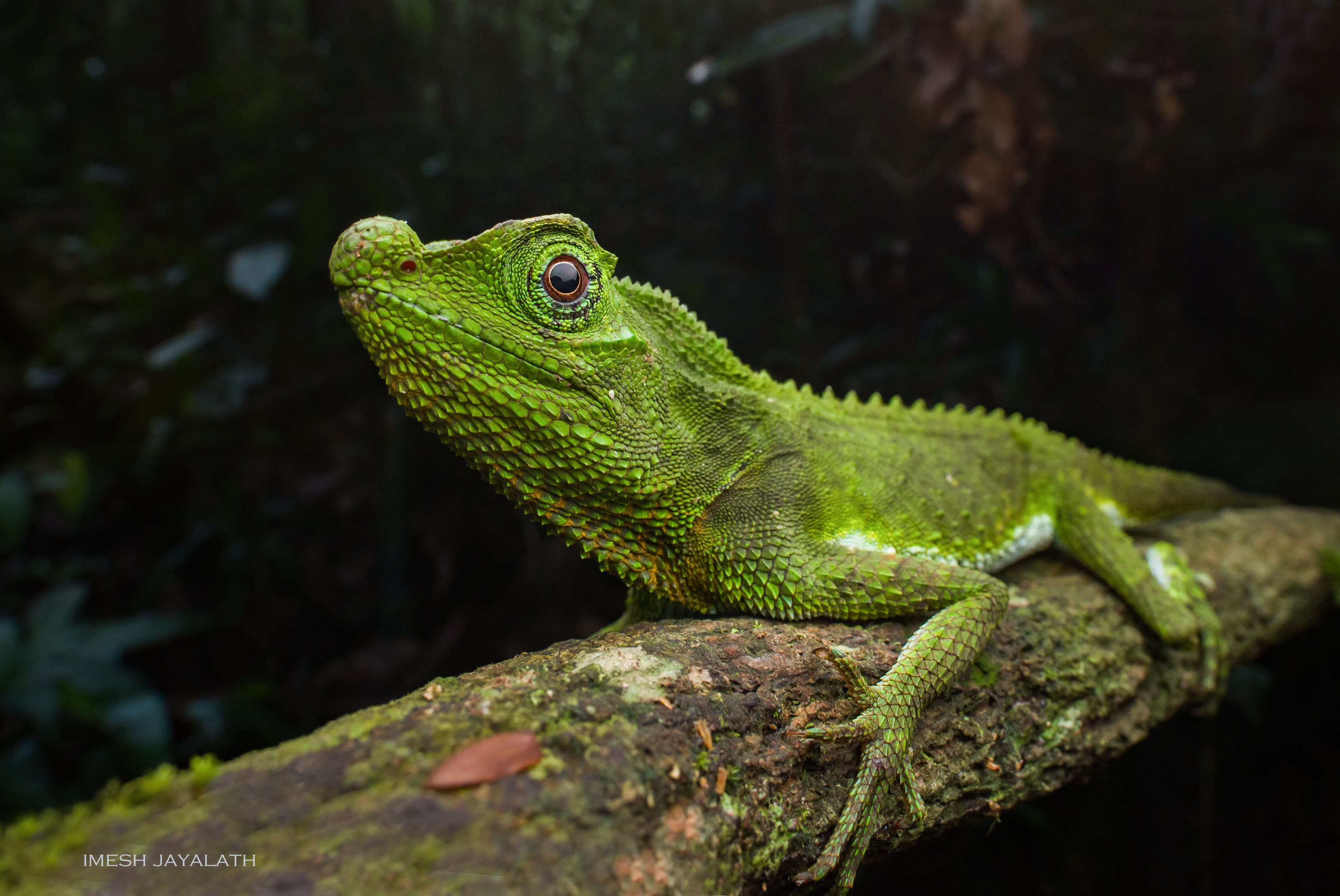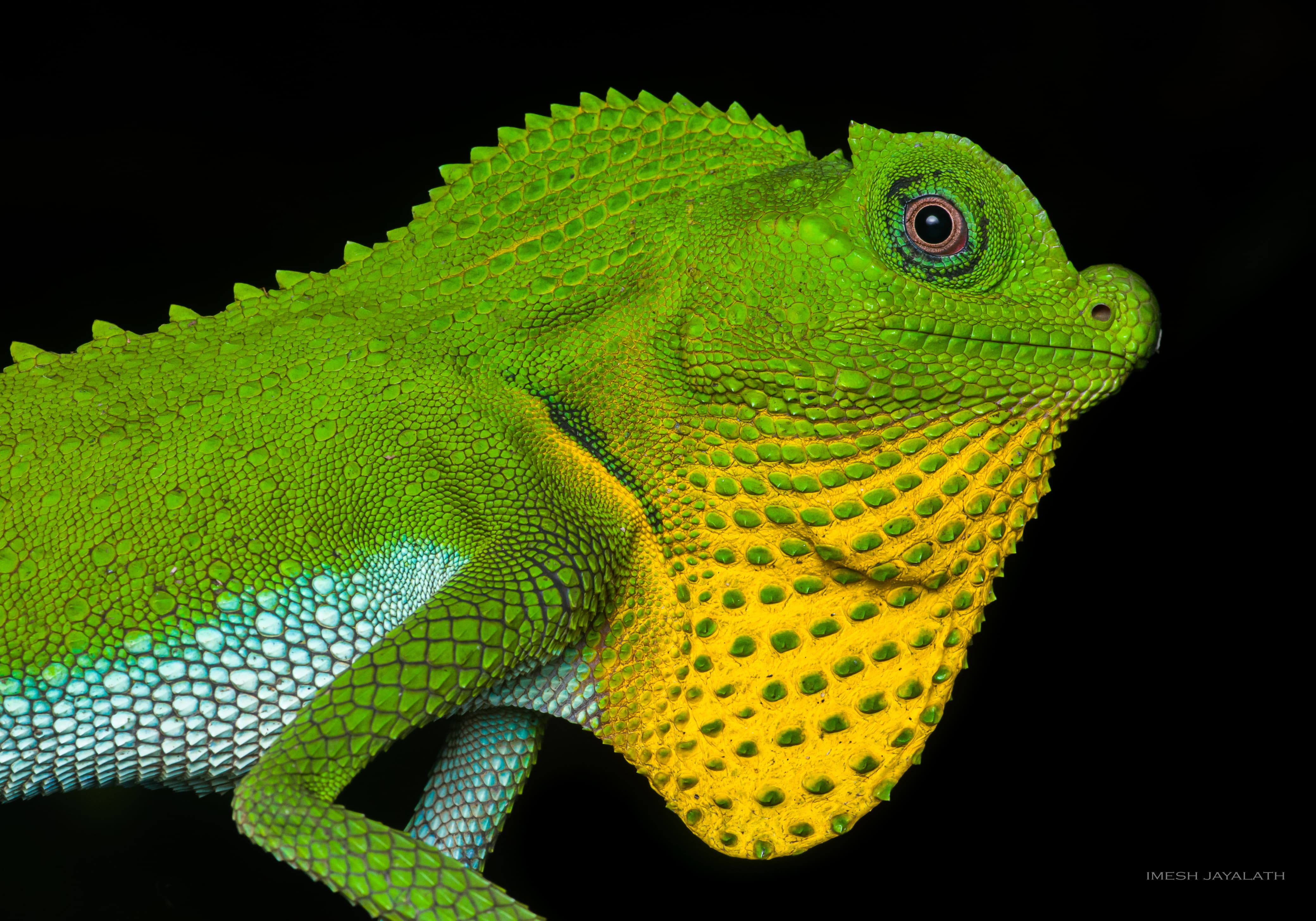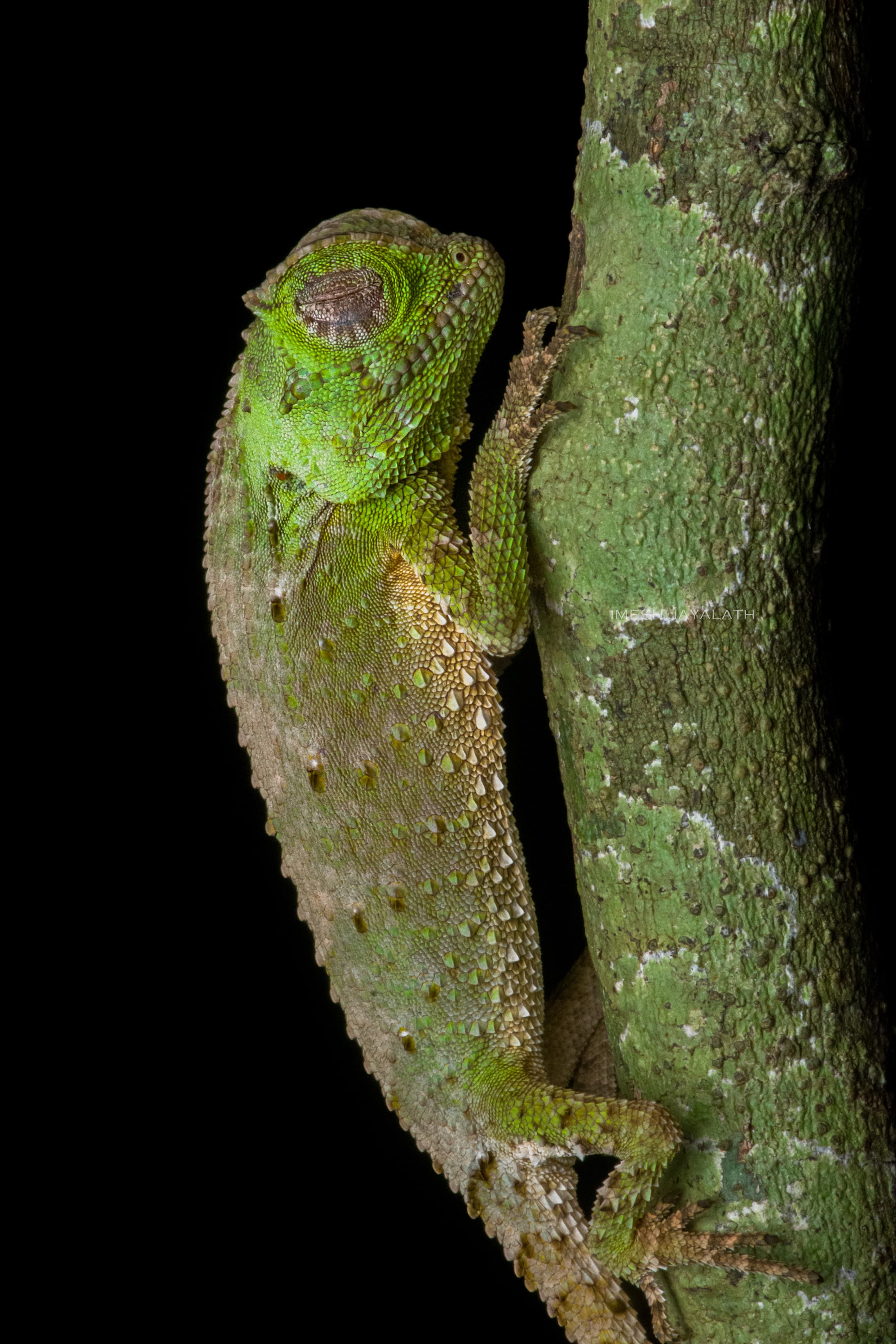
Contributor

Hump - nosed Lizard
The Hump-nosed Lizard (Lyriocephalus scutatus) is an arboreal agamid species endemic to Sri Lanka. It is found in shaded forests, home gardens, and plantations, particularly in regions like Kandy, Ratnapura, Udawattakele, Sinharaja, the Knuckles Range, and Peak Wilderness. This species is widespread in the wet zone lowlands and mid-hills, ranging from -25 meters to 1600 meters above sea level. Though primarily forest-dwelling, it can sometimes be spotted in cultivated areas.

Hump - nosed Lizard
This lizard is easily recognizable due to its distinctive features. It has a unique knob-like rostral (snout) appendage and an elongated, pointed ridge above the eyes, which sets it apart from all other Sri Lankan agamids. Males are generally larger, reaching a total length of 200-300 mm, while females are slightly smaller, measuring 160-240 mm. Their movement on the ground is slow, but they are agile climbers, often found resting on tree trunks up to 10 meters high.

Hump - nosed Lizard
The Hump-nosed Lizard has a diverse diet, feeding on insects, arthropods, worms, fruits, young shoots, and buds. It uses both its forelimbs and snout to dig for food. At night, it moves higher up into the trees for safety. This species relies on non-aggressive defense mechanisms, such as color changes, inflating its body, feigning death, and opening its mouth to reveal a bright red interior. Egg-laying occurs mainly in the rainy season, with females burying 8-12 eggs (sometimes up to 16) in soft, humus-rich soil at a depth of about 50-60 mm.